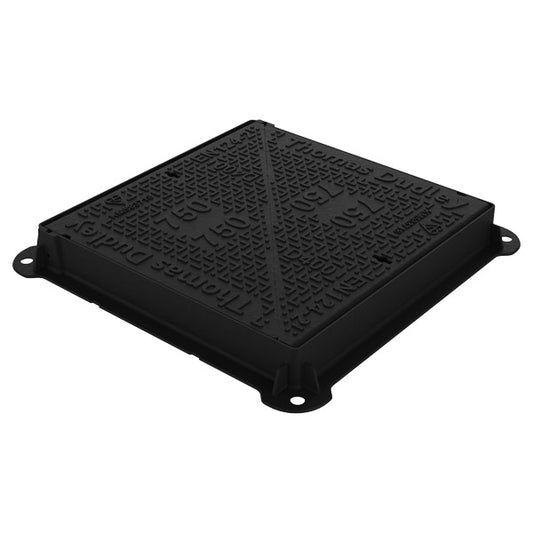-
Recessed 86mm Composite Block Paving Manhole Cover - 3.5 tonne (up to 65mm block)
 View DetailsRecessed 86mm Composite Block Paving Manhole Cover - 3.5 tonne (up to 65mm block)Est. delivery 1-2 working days
View DetailsRecessed 86mm Composite Block Paving Manhole Cover - 3.5 tonne (up to 65mm block)Est. delivery 1-2 working days- Regular price
- From £53.99 (£44.99 ex VAT)
- Regular price
-
- Sale price
- From £53.99 (£44.99 ex VAT)
- Unit price
- per
-
Recessed 100mm Galvanised Block Paving Manhole Cover - 10 tonne (up to 80mm block)
 View DetailsRecessed 100mm Galvanised Block Paving Manhole Cover - 10 tonne (up to 80mm block)Est. delivery 2-3 working days
View DetailsRecessed 100mm Galvanised Block Paving Manhole Cover - 10 tonne (up to 80mm block)Est. delivery 2-3 working days- Regular price
- £113.99 (£94.99 ex VAT)
- Regular price
-
- Sale price
- £113.99 (£94.99 ex VAT)
- Unit price
- per
-
Recessed 80mm Galvanised Block Paving Manhole Cover - 10 tonne (up to 65mm block)
 View DetailsRecessed 80mm Galvanised Block Paving Manhole Cover - 10 tonne (up to 65mm block)Est. delivery 2-3 working days
View DetailsRecessed 80mm Galvanised Block Paving Manhole Cover - 10 tonne (up to 65mm block)Est. delivery 2-3 working days- Regular price
- From £69.99 (£58.33 ex VAT)
- Regular price
-
- Sale price
- From £69.99 (£58.33 ex VAT)
- Unit price
- per
Frequently Asked Questions
What is a manhole access cover and how does it work? A manhole access cover is a durable lid that sits over an underground utility chamber, such as a drainage or cable system. It prevents accidents, protects infrastructure, and allows authorised access for inspection and maintenance. For detailed installation guidance get in touch with our team on 0121 351 3230.
What is EN 124 and why is it important? EN 124 is the European standard that classifies manhole covers based on their load-bearing capacity. It ensures the cover is suitable for its intended application—whether in pedestrian zones, driveways, or highways. Learn more about EN 124 load ratings.
Which EN 124 load class do I need for my project? Here’s a quick overview:
B125 – Suitable for driveways, paths, and light-use car parks
C250 – Designed for kerbsides or lightly trafficked roads
D400 – Ideal for roads, commercial yards, and HGV areas
See our full manhole cover load size guide.
What’s the difference between manhole covers and access covers? The terms are often used interchangeably. Generally, manhole covers are heavy-duty and used for public roads and highways, while access covers include lighter, recessed, or decorative options used in gardens, paths, or interior spaces.
What materials are manhole covers made from? Materials include:
Ductile Iron – Strong, ideal for roads
Composite – Lightweight, corrosion-resistant
Galvanised Steel – Rust-resistant and cost-effective
Concrete – Often used in landscaping or non-load areas
Each material offers different benefits based on durability, load capacity, and budget.
Can you build over a manhole cover? In some cases, yes—but only with permission from the relevant utility provider and local building control. Obstructing a manhole can restrict access for maintenance and may breach regulations.
How do I know if a manhole cover is BSI Kitemarked? Look for the BSI Kitemark symbol cast into the cover, and check the product description or specification. All Kitemarked covers have been tested for strength, safety, and durability in line with British standards.
Where can I buy manhole access covers? Right here at Cotterill Civils. We stock a wide range of manhole and access covers from top brands including Eccles, Polydrain, Thomas Dudley, and Wrekin—with fast UK delivery and expert advice.



















